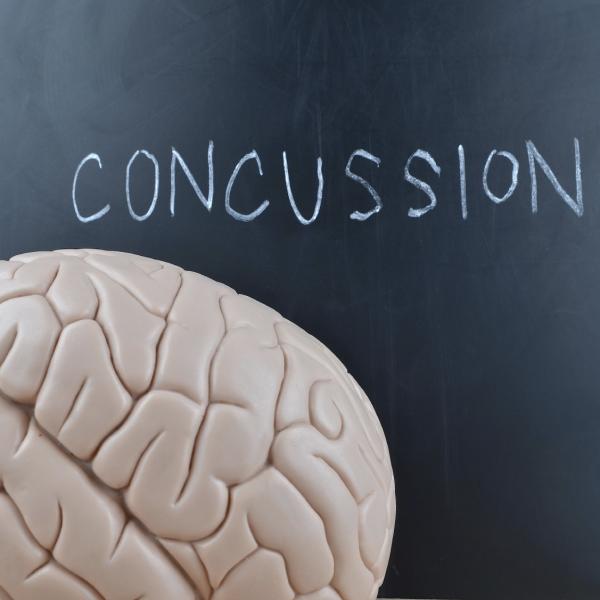
Concussions continue to be a hot topic on the sidelines and in the news, especially now that we are in the thick of football season. And while there has been much advancement in the diagnosis and treatment of traumatic brain injuries, knowing when to pull an athlete out of the game isn’t always an exact science.
Because the sideline diagnosis of a concussion can be tricky - and we often rely on the “truth” from a player on how he or she actually feels – coaches and parents need to be diligent in how they handle situations when a blow, or a jarring of an athlete's head, looks suspicious.
Eric Buck, Certified Athletic Trainer and Sports Medicine Supervisor with ATI Physical Therapy, has spent many years on the sidelines treating athletes of all ages, and from all areas of sports. Eric offers these tips and guidelines that may help answer the question “When do I pull my athlete?”
“Early recognition that something may be wrong is essential. No matter how hard the impact, any trauma to the head or neck can be a cause for a potential concussion, and it’s important to immediately assess a player’s safety,” says Eric. “Simply ask questions, observe for visible symptoms and promote honesty and trust. Often, your athlete just won’t look or feel right.”
Eric stresses the importance of removing the athlete immediately once a symptom is reported or observed, and then seeking advice from a medical healthcare professional licensed to evaluate concussions. “You know your kids better than anyone, and you will know if they aren’t acting normal. If you are unsure if they are symptomatic, use caution and remove from the activity. When in doubt, pull them out! Never anticipate a resolution of symptoms.”
Concussion Facts
- A concussion is considered a brain injury.
- A concussion can occur with or without loss of consciousness.
- Younger athletes experience greater severity, and can take longer to recuperate.
- There is no such thing as a mild concussion.
- A concussion can occur with or without a hit to the head. A sudden jarring can be just as traumatic.
- After one concussion, an athlete is 1 – 2 times more likely to receive a second one.
- It is not normal for an athlete to “have their bell rung.” Removal from play should always occur following this symptom.
Concussion Symptoms
These symptoms may or may not be immediately noticeable, but may include the following, individually or in combination thereof:
- Appearing dazed, stunned or confused
- Answers questions slowly
- Difficulty thinking clearly or loss of memory
- Feeling sluggish, hazy, or groggy
- Headache or blurry vision
- Nausea or vomiting
CONCUSSION! Now What?
“Concussion-like symptoms are numerous. Instead of listing the symptoms, I tell parents to ask what feels abnormal, note any out of the ordinary appearances and monitor these symptoms throughout the day. Be sure to schedule an evaluation with an athletic trainer or a physician licensed to practice medicine whom is proficient in concussion care,” says Eric. “These healthcare professionals will perform a thorough assessment and develop a plan of care and recovery to safely return to sports.”
A trip to the emergency room is never a wrong choice, but most concussions can be treated conservatively. However, if an athlete experiences the following symptoms, take them to the emergency room immediately!
- Symptoms rapidly worsen in severity
- Loss of consciousness or “blacking out”
- Vomiting
- Slurred speech, or unequal pupil dilation
Following diagnosis, remember COMPLETE REST is the true remedy. Treat a concussion by resting the brain from all stimulating activity, including sports, television, video games and texting. Also, take away the athlete’s phone to remove temptation.
There is no need to continually wake from sleep. Be sure the athlete is comfortable, maintain hydration and a normal diet. Avoid additional exertion or stressful activity until symptom-free. Remember, recovery is day-to-day and differs between athletes. Keep the athlete out of play until an appropriate health-care professional says he or she is symptom-free and gives the okay to return to activity.
Additional Tips
- All athletes should receive a baseline concussion test prior to the start of any athletic season. Results from this testing can be used to help determine if an athlete has a concussion.
- Studies have shown that when a certified athletic trainer is present, it greatly increases the chances that a concussion will be properly diagnosed.
- Educate your athlete on the mechanisms and symptoms of a concussion.
- Ask questions about the concussion policy at your school, league or club, including access to a certified athletic trainer.
ATI Sports Medicine offers a comprehensive concussion care program, including baseline and post-concussion neuro-cognitive testing, assignment of a certified athletic trainer and access to physicians specializing in concussion management. For more information on ATI’s Concussion Care Program, contact eric.buck@atipt.com.
For more information on concussions, visit the following links:
Concussion Information: http://www.atipt.com/concussion-information
Athletic Trainers are Crucial in Assessment and Management of Concussed Athletes: http://www.atipt.com/news-media/blog/athletic-trainers-are-crucial-in-assessment-and-management-concussed-athletes
Concussions in Football: http://www.atipt.com/blog/on-football-field-concussions-make-a-big-impact
Heads Up: Concussion: http://www.cdc.gov/concussion/headsup/
